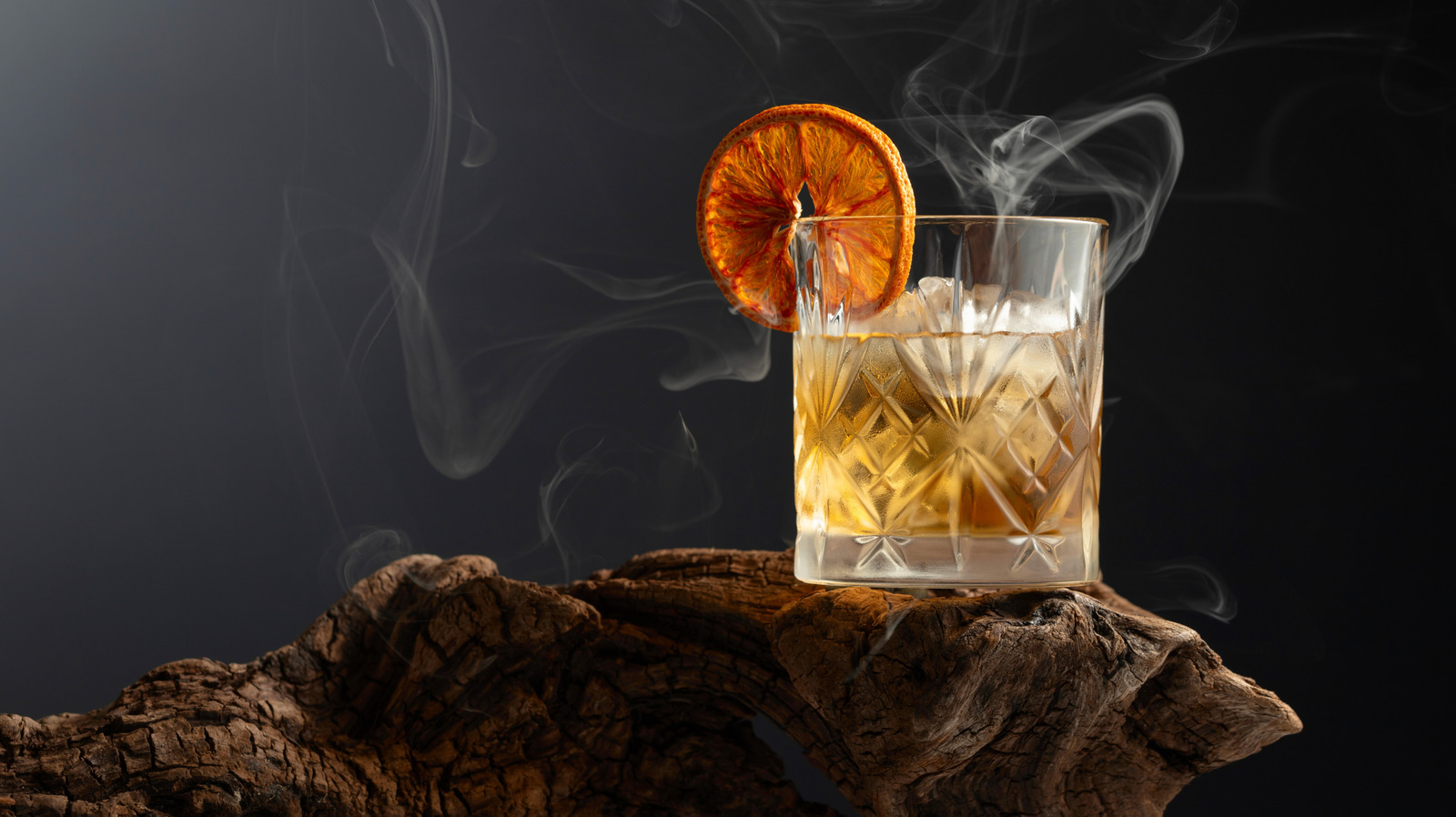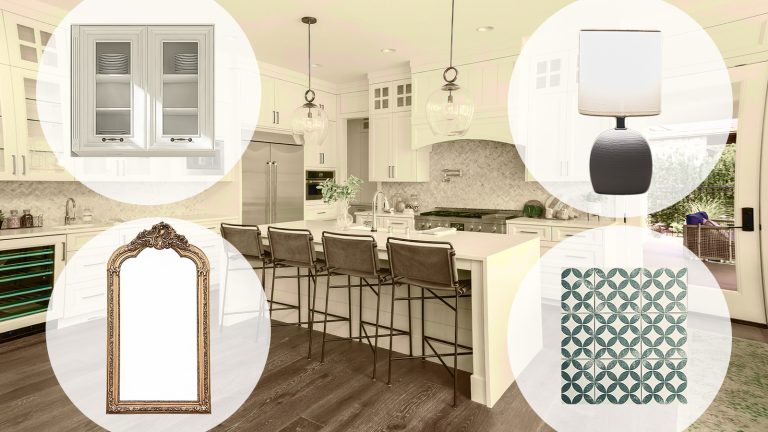We may receive a commission on purchases made from links.
Look up “classic” in the dictionary and you’ll find a picture of the old fashioned cocktail. Well, in a theoretical, spirits-based dictionary, at least. A combination of whiskey, sugar, and bitters, this tipple dates back to the early 19th century. It was one of the earliest cocktails, developed not long after people began mixing bitters with sugar and a base spirit. The old fashioned has remained a top bar staple ever since — polling thousands of bars and restaurants, NielsenIQ ranked it the fifth most popular cocktail in 2023. Considering its legendary status, many imbibers and home bartenders start by first mastering the classic old fashioned recipe. We learn how to make a perfect one every time, which often hinges on using high-quality ingredients — it’s helpful to know, for example, the best bourbons you can use in an old fashioned. Over time, we may look to fun must-try old fashioned riffs, incorporating in flavor trends and seasonal variations, resulting in spiced chai old fashioneds and gingerbread old fashioneds.
But perhaps the best old fashioned lives in between: A classic, straightforward iteration, refreshed with a refined twist that updates it or elevates it without vastly changing the entire flavor profile. We wanted to learn how to make a quintessential old fashioned but with new spices or aroma-boosting garnishes, creating a cocktail that pleases the traditionalist but excites the adventurous imbiber. So, we asked an expert. And Chris Walster, whiskey connoisseur at The Cask Connoisseur, had five brilliant ideas.
Use cinnamon to warm up your old fashioned
Walster’s first suggestion is toasty and cozy: “Light a cinnamon stick, let it smolder, then stir the drink with it. This adds a smoky, spiced aroma that enhances the bourbon’s warm character.” The most conventional garnishes for an old fashioned are an orange slice or twist and a maraschino cherry. Using a cinnamon stick subtly shifts the overall flavor and aroma profile, but in a way that only further highlights the bourbon, bitters, and hint of sweetness. Some of bourbon’s key tasting notes are vanilla, nuts, fruits, honey, molasses, caramel, maple syrup, and baking spices. Angostura bitters are a — fittingly — more bitter expression of baking spices in addition to botanicals. A cinnamon stick will amplify the spice notes in both and heat up other notes, creating the effect of a fruit pie fresh from the oven. Additionally, the smoke from lighting the stick will enhance the smoky characteristic bourbon can have from aging in charred barrels, as well as the barrels’ wood character.
To do this, make sure you have a clear space and a heatproof surface like a stainless steel or ceramic plate. Light the cinnamon stick with a lighter or match and waft it around a bit — it will also make your room smell lovely. Then simply drop it into the old fashioned and give it a stir. Add that orange wheel, too, to give the warm profile some brightness.
Deepen the old fashioned’s sweetness with maple syrup
Classic old fashioned recipes call for the element of sweetness to be achieved by mixing 1 teaspoon of sugar with 1 teaspoon of water (plus three dashes of bitters) before adding ice and whiskey. You’re essentially creating an instant simple syrup. But this part of the equation offers endless opportunities for different twists. Many mixologists use actual simple syrup instead, which both cuts down on the stirring time and can add a bit more silkiness and body to the drink’s texture. And simple syrup is a snap to change up — sugars with deeper, warmer profiles like brown sugar and demerara sugar are popular, for example. Walster suggests swapping even that out for another ingredient that’s also instant and features a nice, full mouthfeel, but brings its own flavors to the party: maple syrup.
“Replace the traditional sugar or simple syrup with a splash of high-quality maple syrup for a richer, more complex sweetness that pairs beautifully with the bourbon’s caramel notes,” he says. Indeed, maple syrup will play up all that vanilla, caramel, and butterscotch in bourbon, and match its own maple notes. It also rounds out the drink’s sweetness and balances it with hints of earthiness and spice. Learning the four maple syrup grades gives you different flavor options, too: Golden is light and vanilla-y, amber is thicker and richer, dark is thicker still and has an intense maple quality, and very dark takes that into molasses-like boldness.
Use ice to slowly infuse your old fashioned with flavor
Ice is an essential workhorse in the old fashioned, as it is in most cocktails, whether they’re prepared with it, served over it, or both. It obviously chills the drink so it remains at a pleasant temperature to sip. Importantly, it dilutes the drink, too, which is key with stronger, more spirit-forward tipples like the old fashioned. As the ice begins to slowly melt, it helps balance and connect the flavors of the whiskey, bitters, and sugar. This is where you can have some fun, Walster says.
“Freeze a large ice cube with orange zest and whole cloves inside,” he recommends. “As it melts, it slowly infuses the drink with extra citrus and spice.” For starters, a big rock of ice flecked with colorful orange zest and cloves will be visually striking in your old fashioned. And slowly, steadily diluting the beverage while melting, it will keep turning up sweet yet tart citrus notes alongside spicy cloves, brightening the old fashioned while warming it at the same time. You can try this with anything you like — lemon zest or cherries, for example, and chopped cinnamon sticks or star anise. It’s incredibly easy: Just add in your ingredients when filling your ice tray, and use filtered water over tap to ensure only your mix-ins contribute flavor. You can find larger, old fashioned-friendly ice molds on Amazon for around $10.
Swap out your old fashioned’s bitters
Bitters were one of the first key components of what was considered a cocktail. They were made as early as the 17th century to help digestive issues with their herbs, spices, and bark in alcohol, so they were already well known when people began mixing them with sugar, water, and spirits. Angostura is one of the oldest of the bitters brands still widely used today. It was on the scene by 1824, created by German army surgeon Johann Gottlieb Benjamin Siegert as a stomach tonic for soldiers while he was working in Venezuela in a town then called Angostura. It quickly became a favorite and an essential part of the old fashioned, cementing in that baking-spice profile for the drink. But that’s where you can make a subtle but noticeable and fresh update.
“Swap traditional Angostura bitters for walnut or chocolate bitters to bring out deeper, nutty and cocoa notes in the bourbon,” Walster suggests. Bitters are thought of as a kind of seasoning for cocktails — just a few dashes can bring out different notes in a drink’s aroma. Walnut and chocolate are both complementary options for an old fashioned that would warm it right up, but you can turn to any of your favorite flavors. Consider some of the best bitters for bourbon-forward cocktails. On the opposite end of the spectrum from deep, bittersweet walnut or chocolate, there’s bright orange, which would match your garnish, or vanilla, spiced cranberry, or peach.
Caramelize your old fashioned’s orange wheel
Walster’s final recommendation is a showstopping garnish that elevates the old fashioned’s flavor profile and is guaranteed to impress guests when you’re entertaining. “Instead of a regular orange peel, brûlée an orange slice with a torch for a caramelized citrus touch that enhances the drink’s complexity,” he says. This keeps the drink’s classic orange slice garnish in place, which maintains its bright citrusy pop against the woody, earthy, sweet, spicy qualities of the whiskey and bitters. But it adds a rich, warm element and a more complex layer of sweetness, one that both matches and balances different sugar notes in the tipple.
To do this, slice an orange into pieces the size and shape you want for your garnishes — they will be too hard to work with once brûléed. Pat them dry to remove excess moisture. For each slice, sprinkle a bit of sugar on top and hit it with a kitchen torch. If you don’t have one, you can put the sugared slices in a baking dish and broil them in the oven for about five minutes. Play with your sugars, too, using white for more straightforward sweetness or brown for a deeper effect. With this process, be careful and be creative. Like Walster’s other ideas, it will deliver the old fashioned you know and love, but with an exciting and decadent update.





